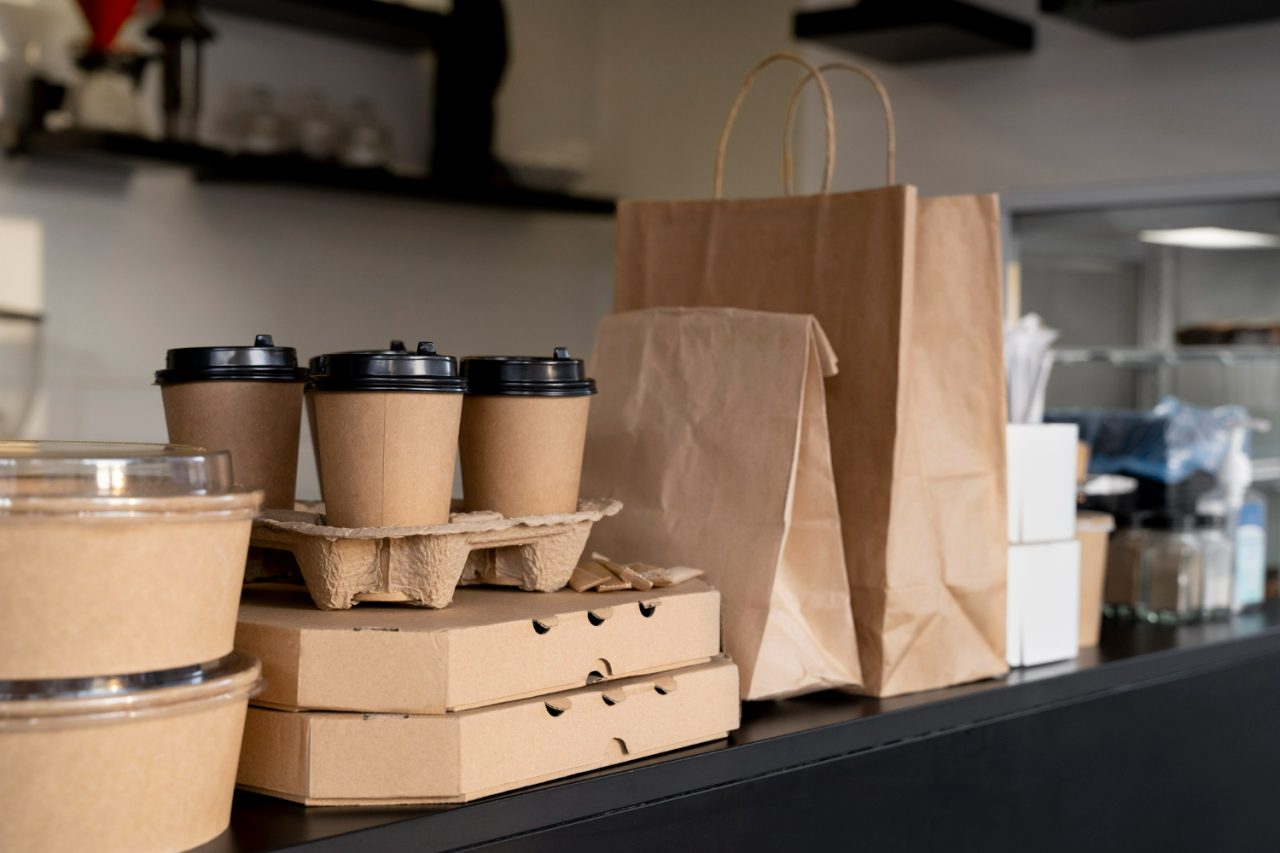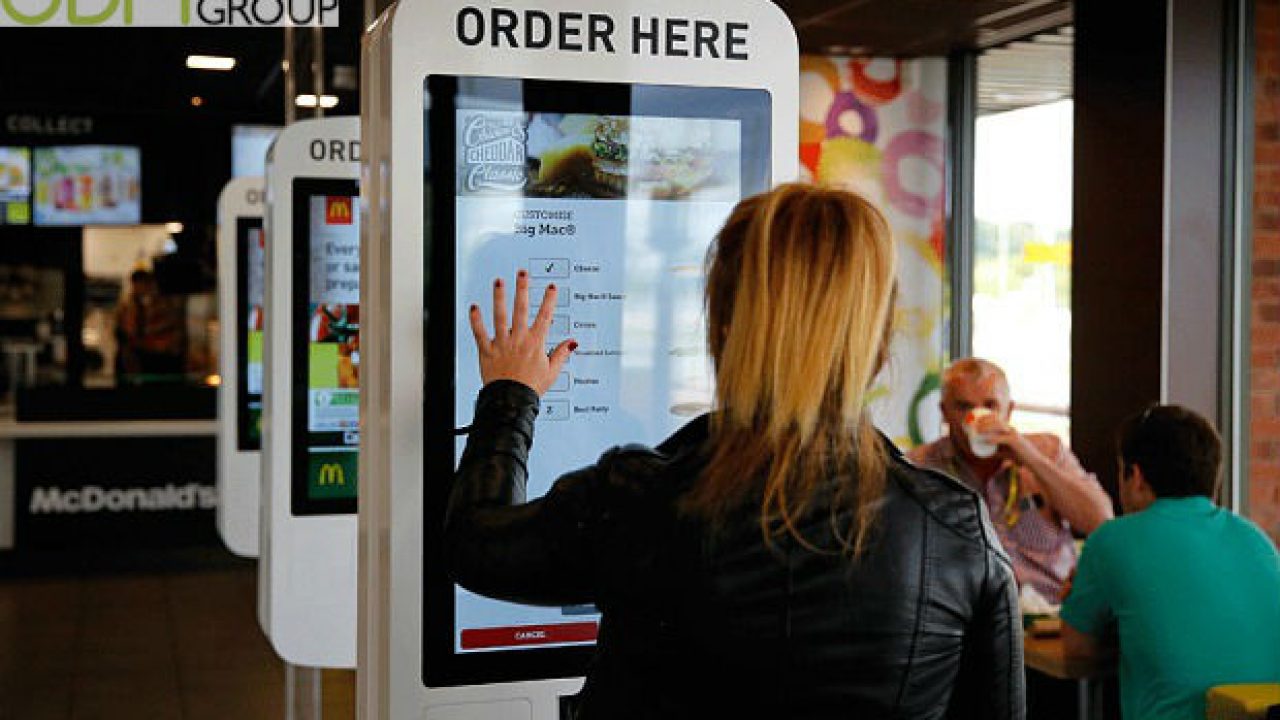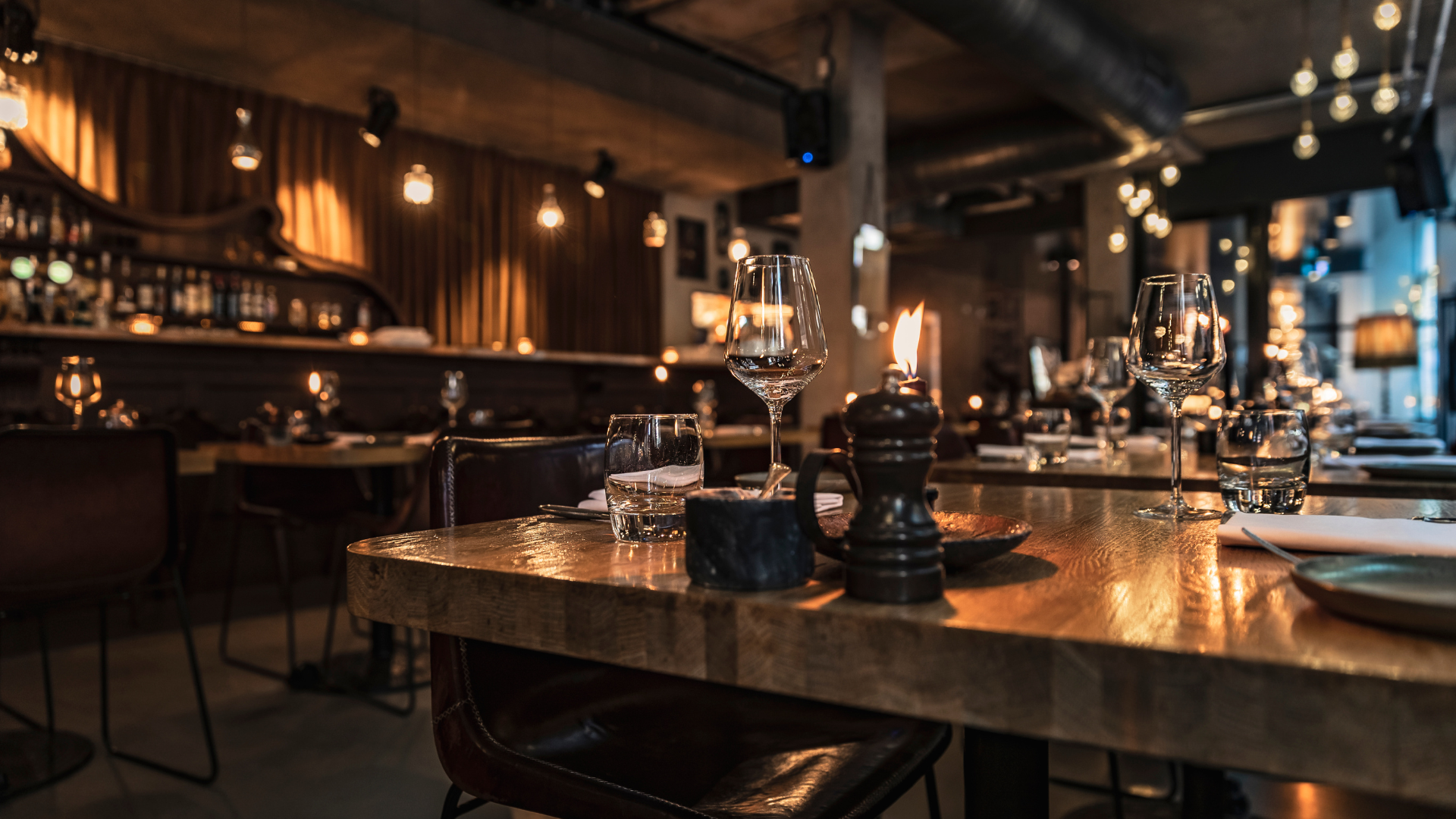In the United Kingdom’s competitive culinary landscape, where the craving for fish and chips or delicious pies can strike at any moment, visibility is the name of the game. Every time you’re strolling through the bustling British streets, and your stomach growls for food, what’s the first thing you do? You reach for your smartphone and type in “best XYZ restaurants near me,” right?
And that’s exactly where local SEO takes centre stage. It is the secret sauce that can set your eatery apart from competitors and make it the go-to for hungry customers. Optimising your takeaway restaurant for local SEO means that your brand will pop up at the top of the search results whenever someone in your area craves a piping hot meal.
But how do you score that spot on your customer’s screens? In this blog, we’ll give you the scoop on local SEO strategies customised for UK takeaway restaurants so you don’t vie for attention anymore. Read on to bring more customers through your doors!
The basics of local SEO
Local SEO, or Local Search Engine Optimisation, is a potent digital marketing strategy. According to Search Engine Roundtable, a whopping 46% of all searches on Google have a “local intent” behind them. This means that most people who search online are finding services near them. In such a competitive landscape, local SEO aims to give more visibility to local businesses, like takeaway restaurants, in search engine results.
When someone in your geographical area searches for phrases like “best smash burger takeaway near me” or “best pizza in Hayes,” a well-optimised local SEO strategy makes sure that your restaurant grabs the top results on search engines. This helps attract highly relevant and targeted traffic to your brand since 76% of consumers who conduct local searches on their phones visit a store the same day.

When your business appears in local search results, it can enhance your credibility and trustworthiness in the eyes of potential customers. People tend to trust businesses that are easily discoverable online, as it gives them confidence in your legitimacy and quality of service.
Google My Business
Google My Business (GMB) is a game-changer for local SEO since it lets businesses enhance their online presence and connect with local customers. A Google Business Profile is a free business listing platform that allows you to share vital information about your business.
This includes your location, services, products, and an array of photos. Once optimised, your Business Profile is prominently featured in local search results, making it a key component for local SEO strategies.
Without a well-optimised GMB listing, your chances of ranking well in local searches are close to none. To achieve better local rankings, consider implementing the following tips:
- Claim and Verify Your Listing: Ensure you claim and verify your GMB listing to have control over the information displayed
- Complete Your Profile: Fill out all the relevant information accurately, including business name, address, phone number (NAP), hours of operation, and website URL
- Select Business Categories: Choose the most relevant categories that accurately describe your business
- Optimise Your Description: Craft a compelling business description that highlights your unique selling points and includes relevant keywords
- Encourage and Respond to Reviews: Encourage satisfied customers to leave positive reviews and respond authentically to all reviews.
- Utilise Attributes: Select relevant attributes that describe your business (Think: Wi-Fi availability, outdoor seating, or wheelchair accessibility)
- Monitor Insight: Use GMB’s Insights feature to track how users are interacting with your listing (Think: how many people are viewing your profile, clicking for directions, or visiting your website)

Additionally, Google emphasises the importance of regularly uploading photos and videos to your Business Profile. How about posting behind-the-scenes from your takeaway business or snapshots of your happy staff members?
This not only engages your audience better but also positively impacts your rankings. According to Google, businesses with photos on their profiles receive 42% more requests for driving directions on Google Maps and 35% more click-throughs to their websites than those without photos.
Keyword Research
Keyword research is crucial when it comes to local SEO for UK takeaways because it helps them identify and target the specific search terms that potential customers in their local area are using to find food delivery options.
Keyword research ensures that your website and content are optimised for the most relevant terms to your business. So the more right keywords you target, the more your chances are of ranking higher in the search engine results pages.

To identify location-based keywords that are relevant to a UK takeaway restaurant, follow these steps:
1. Google Suggest
Google Suggest, also known as autocomplete, can be a valuable tool. For example, think that you own a cosy takeaway restaurant in Edinburgh, Scotland, specialising in traditional haggis dishes. You want to ensure that locals searching for haggis takeaway options find your restaurant easily. To identify relevant keywords, start typing in the Google search bar: “haggis takeaway in Edin…”, and you will notice Google’s autocomplete suggestions:
“haggis takeaway in Edinburgh”
“best haggis delivery in Edinburgh”
“traditional Scottish haggis for delivery”
These autocomplete suggestions provide valuable keyword ideas. Plus, optimising your website with these phrases will help you attract local customers searching for haggis takeaway options in Edinburgh.
2. Google Keyword Planner
The Google Keyword Planner is a powerful tool for keyword research. It provides search volume data for specific geographic areas, helping you understand the popularity of certain keywords in your locality. You can use it to validate the keywords you’ve found through Google Suggest and Autocomplete.
3. Competitor Analysis
Analyze the websites of your competitors, especially those that are ranking well in local search results. Use Google’s “Start With a Website” feature to input their homepage URL and see the keywords they are targeting. This can give you insights into which keywords are effective in your niche.

4. Local Terms
Include specific local terms in your keyword research. For example, if your takeaway restaurant is in Manchester, consider keywords like “Manchester takeaway,” “food delivery in Manchester,” or “Manchester pizza delivery.”
Once you’ve compiled a list of relevant location-based keywords, integrate them naturally into your website content, including your homepage, product pages, and blog posts. Ensure that your website is optimised for both on-page SEO and local SEO, including accurate business information on Google My Business and other relevant local directories. This comprehensive approach will improve your restaurant’s visibility and help attract local customers searching for takeaway options.

On-page and Off-page SEO
On-page and off-page SEO are significant components of a UK takeaway restaurant SEO. Local SEO helps these businesses attract nearby customers, boost online visibility, and ultimately drive more orders.
1. On-Page SEO
It is important to create high-quality, informative, and engaging content that caters to your local audience. Write blog posts, articles, or guides related to your cuisine, local events, and news, including local keywords. Plus, ensure that each page has unique and descriptive title tags and meta descriptions. Include your restaurant’s name, location, and primary keywords in these elements.
Now, in case you’re a takeaway business in the UK without a website, Grafterr can be a valuable resource for you. By signing up for free, you can easily create your own SEO-friendly website through Grafterr. The first step in optimising your listing for on-page SEO is identifying relevant keywords tailored to your takeaway restaurant.
Think about location-based keywords, such as “London takeaway” or “Manchester pizza delivery,” and seamlessly incorporate these keywords into your website’s content, meta tags, and headings.
And how can we forget the importance of a mobile-friendly design? Over 55% of a website’s traffic comes from mobile, making a mobile-responsive site critical for a positive user experience. Plus, take your time to improve website loading times. Faster-loading pages not only improve user experience but also play a role in search engine rankings.
2. Off-Page SEO
Off-page SEO involves elevating your website’s authority across the web. It encompasses everything outside your website that adds up to your search engine rankings and boosts online visibility. Here is a checklist you should keep in mind for your takeaways off-page SEO:
- Claim and verify your Google My Business listing
- Ensure all information is accurate, including your business name, address, phone number, website, and business hours
- Encourage customers to leave reviews
- Ensure your business information is consistent across online directories and citation websites
- Maintain an active presence on social media platforms, particularly those relevant to your audience
Local Backlinks
If the question of how to improve takeaway local rankings UK is bothering you day and night, one thing that can be of great help is backlinking. Local search engines, like Google My Business, usually consider how high-quality and relevant your backlinks are to determine your rankings.
Plus, backlinks from reputable local sources, such as other local businesses, organisations, and local news outlets, can boost your business’s credibility within the local community. When local companies vouch for your website through backlinks, it signals trust to search engines and potential customers.
Here are a few tried-and-tested tips to acquire local backlinks for SEO:
- Leverage Existing Relationships: Start by contacting businesses you already have relationships with, such as suppliers, distributors, neighbouring businesses, or partners.
- Local Chamber of Commerce: Joining your local Chamber of Commerce can provide an easy and valuable local backlink.
- Sponsor Local Events: Support local events or organisations in your community by becoming a sponsor. Event websites often include sponsor lists with backlinks to sponsor websites.
- Local PR and News Coverage: Reach out to local newspapers, news websites, and reporters to pitch newsworthy stories or events related to your business.
- Social Media Monitoring: Keep an eye on social media platforms, especially Twitter, using search strings like “Looking to speak to” + “city” or #journorequest + “area.” Journalists often use these platforms to find local sources for stories.

Remember that the quality and relevance of local backlinks are more important than quantity. Focus on building relationships with local businesses and organisations, and seek backlinks from sources that are relevant to your target audience and industry.
Customer Reviews
One of the best techniques for local search optimisation for UK restaurants is enriching your listing with authentic experiences, reviews, and feedback. Customer reviews are a significant ranking signal, and positive reviews can improve your local SEO efforts. Search algorithms often favour businesses with a higher quantity and quality of reviews.
Positive customer reviews help build trust and credibility with potential customers. 84% of individuals tend to trust online reviews as much as much as their friends. Since reviews provide valuable social proof, they can result in higher click-through rates and conversions.
To encourage more customer reviews for better local SEO:
- Focus on delivering a great experience to every customer to naturally encourage positive feedback.
- Actively ask satisfied customers to leave reviews. You can do this in person, through email, or by using review request tools.
- Thank customers for their feedback, address any concerns, and demonstrate your commitment to customer satisfaction
- Encourage customers to leave reviews on various platforms, not just Google. Yelp, Facebook, TripAdvisor, and industry-specific review sites can all contribute to your online reputation.

Tracking and Metrics
Tracking and metrics provide valuable insights into the performance of your online presence within a specific geographic area. They allow you to determine the return on investment (ROI) of your local SEO efforts. You can see if the time and resources you’re investing in local SEO are generating more business, which is essential for making informed marketing decisions.
One great tool for measuring the effectiveness of your local SEO strategies is Google Analytics. It provides detailed website traffic data, including the number of visitors, bounce rate, and conversion rate. You can also set up goals to track specific actions, such as form submissions or phone calls.
You can also use insights from your Google My Business account. GMB provides data on how often your business appears in local searches, customer actions (e.g., website visits, calls), and customer reviews. Moreover, platforms like Moz, BrightLocal, or SEMrush offer tools specifically designed for local SEO tracking, including rank tracking, citation management, and competitor analysis.
Here are some key performance indicators (KPIs) you should measure:
- Local Organic Traffic
- Google My Business Metrics
- Conversion Rate
- Local Search Rankings
- Online Reviews
- Click-Through Rate (CTR)
So, if you’re someone who is wondering about how to rank my UK takeaway in local searches, there’s not a sure-shot answer. Ranking locally takes consistent efforts and tweaking. You need to analyse the key metrics and make data-driven adjustments to your local SEO strategy in order to improve your online visibility and attract more local customers.
Conclusion
Local search optimisation for UK restaurants is not just an option but a necessity to thrive in today’s digital landscape. By implementing these strategies – optimising Google My Business, securing online reviews, and maintaining consistent NAP information – you can elevate your online visibility and attract a steady stream of hungry customers from your local area.
And to help you streamline your operations and manage multi-channel orders seamlessly, consider Grafterr ePOS for Takeaway. With Grafterr, you can not only implement these Local SEO strategies effectively but also ensure that every order is processed with efficiency and precision. Your customers are searching for you – make sure they can find you!





